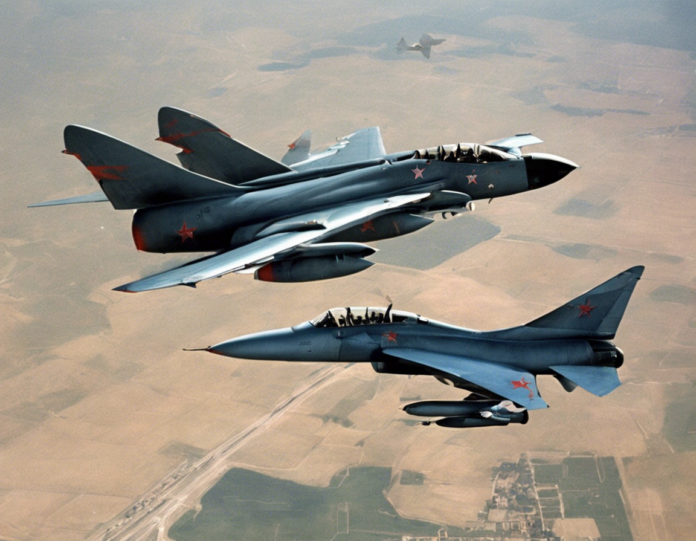The recent acquisition by the United States of 81 Soviet-era combat aircraft has sparked significant interest and discussion within defense and aviation circles. These aircraft, which include MiG-29 and Su-27 models, were obtained through a deal with a private military contractor who had initially procured them from an Eastern European country. The decision to purchase these aircraft raises various questions regarding the rationale behind such a procurement, their potential utilization, and the implications for US military capabilities. In this article, we will delve into the details of this acquisition, explore the significance of acquiring Soviet-era aircraft, and discuss the potential impact on the US military’s operational capabilities.
Why Acquire Soviet-era Combat Aircraft?
The acquisition of Soviet-era combat aircraft by the United States serves several strategic purposes. Firstly, these aircraft can provide valuable training assets for US pilots, allowing them to familiarize themselves with potential adversary capabilities and tactics. By incorporating these aircraft into training exercises, the US military can better prepare its personnel for engagements with foreign air forces that operate similar platforms.
Additionally, studying and analyzing these Soviet-era aircraft can offer insights into the design, technology, and performance characteristics of potential adversary systems. This intelligence can be instrumental in developing counter-strategies and tactics to effectively neutralize or mitigate the threat posed by these aircraft in a real-world scenario.
Implications for US Military Capabilities
The acquisition of Soviet-era combat aircraft has the potential to enhance the US military’s operational capabilities in several ways. By diversifying its fleet with a range of aircraft types, the US Air Force can expand its operational flexibility and resilience in the face of evolving threats. These aircraft could be used in adversary simulations, wargaming exercises, and testing of new weapon systems under realistic combat conditions.
Furthermore, the acquisition of Soviet-era aircraft presents an opportunity for the US military to assess the performance and vulnerabilities of these platforms, thereby informing the development of tactics, techniques, and procedures for countering similar aircraft in a conflict scenario. This hands-on experience with adversary aircraft can provide invaluable insights that cannot be replicated through simulations or theoretical studies alone.
Enhancing Training and Simulation Capabilities
The integration of Soviet-era combat aircraft into the US military’s training and simulation programs can significantly enhance the realism and complexity of exercises conducted by aircrews. By incorporating these aircraft into Red Flag exercises and other training scenarios, pilots can experience firsthand the capabilities and limitations of potential adversary platforms, thereby improving their readiness and adaptability in a high-stress environment.
Moreover, the use of Soviet-era aircraft in training can foster a deeper understanding of adversary tactics and strategies, enabling US pilots to anticipate and effectively counter enemy maneuvers in a real-world engagement. This experiential learning approach can help bridge the gap between theoretical knowledge and practical application, equipping aircrews with the skills and confidence needed to prevail in a contested airspace environment.
Potential Challenges and Considerations
While the acquisition of Soviet-era combat aircraft offers numerous benefits to the US military, it also poses several challenges and considerations that need to be addressed. Ensuring the airworthiness and safety of these aging platforms will require extensive maintenance, refurbishment, and modernization efforts to bring them up to current operational standards. This process may involve significant time and resources to inspect, repair, and upgrade the acquired aircraft to ensure their reliability and effectiveness in training and simulation activities.
Moreover, integrating Soviet-era aircraft into existing training infrastructure and protocols will necessitate modifications and adjustments to accommodate the unique characteristics and operating procedures of these platforms. Training personnel on unfamiliar systems and procedures may present a learning curve that could impact the effectiveness and efficiency of training programs initially.
Conclusion
The acquisition of 81 Soviet-era combat aircraft by the United States represents a strategic move to enhance its military capabilities, training effectiveness, and threat awareness. By incorporating these aircraft into its training and simulation programs, the US military can better prepare for potential engagements with adversaries that operate similar platforms. The hands-on experience gained from operating and analyzing Soviet-era aircraft can provide valuable insights that inform the development of counter-strategies and tactics to maintain air superiority in contested environments.
In conclusion, while the acquisition of Soviet-era aircraft presents challenges in terms of maintenance, integration, and training, the overall benefits in terms of operational readiness, intelligence gathering, and capability enhancement outweigh these concerns. The lessons learned from operating these adversary platforms can prove invaluable in shaping the US military’s approach to future conflicts and ensuring its continued dominance in the airspace domain.
FAQs
-
Are Soviet-era combat aircraft still relevant in modern warfare?
Soviet-era combat aircraft can still pose a threat in modern warfare due to their robust design, capabilities, and potential for upgrades by adversarial nations. -
What are the primary reasons for the US acquiring Soviet-era aircraft?
The acquisition is primarily aimed at enhancing training realism, understanding adversary capabilities, and improving operational readiness. -
How will the US military integrate these aircraft into its existing fleet?
The acquired Soviet-era aircraft will likely be used for training exercises, adversary simulations, and intelligence gathering activities. -
What challenges does the US military face in maintaining and operating Soviet-era aircraft?
Ensuring airworthiness, safety, and compatibility with existing systems are key challenges that need to be addressed during the integration process. -
Can operating Soviet-era aircraft help the US military develop effective counter-strategies?
Yes, firsthand experience with adversary platforms can provide valuable insights for developing tactics, techniques, and procedures to counter similar aircraft in a conflict scenario.


Recent comments